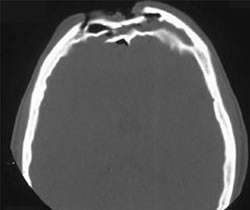For more than 10 years, all trauma centers verified by the American College of Surgeons (ACS) have been required to have a group of mandatory criteria for their highest level of trauma activation. I call these the gang of 6 (ACS-6). They are:
- Hypotension (systolic < 90 torr for adults, age specific for children)
- Gunshot to neck, chest, abdomen or extremities proximal to elbow or knee
- GCS < 9 from trauma
- Transfer patients receiving blood to maintain vital signs
- Intubated patients from scene or patients with respiratory compromise transferred in (may already be intubated but still having compromise)
- Emergency physician discretion
For the most part, it seems obvious that any one of these criteria would indicate a seriously injured patient needing rapid trauma team evaluation. But do all centers use these criteria?
The answer, detailed in a recently published paper, would seem to be no! Researchers at the Universities of Minnesota and Michigan looked at the Trauma Quality Improvement Program database for all Level I and II centers in Michigan over a three year period. They specifically analyzed the data to determine how many centers used all 6 criteria, and any differences in mortality between those that did and those that didn’t. They reviewed records for adults with blunt and penetrating trauma with an ISS > 5.
Here are the factoids:
- More than 50,000 patient records were reviewed, and 12% met at least one of the ACS-6
- Only 66% of patients with at least one ACS-6 criterion were full trauma activations (!!)
- Compliance was poorest with hypotension (only half activated), compared to intubation (75%), central gunshot (75%), and coma (82%)
- 79% of patients meeting any ACS-6 criterion needed an intervention, with a third going emergently to the OR
- Undertriaged patients (ACS-6 with no high level activation) were significantly more likely to die (30% vs 21%), and this was most pronounced in the coma group (47% vs 40%)
Bottom line: Physiologic trauma activation criteria are important, as is the central gunshot one! Although this is a database review subject to the usual flaws (retrospective, data accuracy), the numbers are large and the statistics are sound. And remember, this is an association study, so we don’t really know why the mortality numbers were different, just that they were.
Nevertheless, there is a lot to learn from it. Why don’t all centers use the ACS-6? They certainly have them in their criteria list, or they would have failed their verification visit. It’s because of undertriage! How does this happen? Two ways: either the information in the field is incorrect (GCS may be incorrectly estimated, hypotension may be transient), or personnel in the ED failed to activate properly.
This study shows the importance of rigidly adhering to the criteria. It found a 20% mortality reduction if all of the ACS-6 were applied properly. So make sure that your own trauma program regularly monitors for undertriage, especially with respect to the “gang of 6”!
Related posts:
Reference: Noncompliance with American College of Surgeons Committee on Trauma recommended criteria for full trauma team activation is associated with undertriage deaths. J Trauma 84(2):287-294, 2018.






